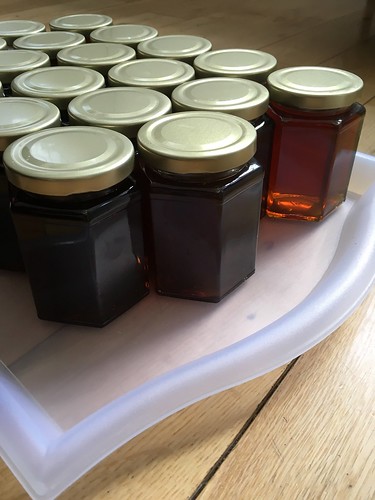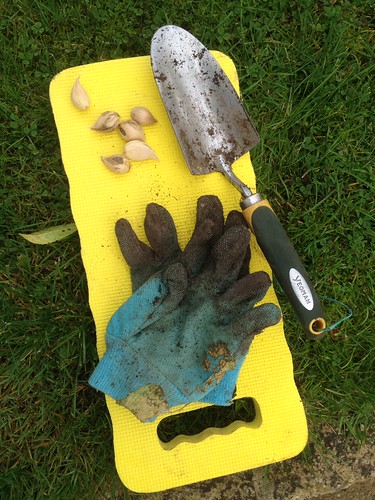When you plan a garden to support pollinators, it’s essential to focus on flowers for early spring and late autumn. These are pinch points in the year. In the spring colonies need to build up – they need plenty of food to feed their young. In the autumn they are building up their winter reserves so that they can survive until the spring. Here are 6 plants that are flowing now in our garden. They should all keep flowing until we get a frost – for us that can be well into November.
Calendula

This is such a favourite of mine. Years ago I sowed some seeds in our garden and ever since they have seeded themselves around. They start flowering in the late spring and keep going until the frosts. They are officially annuals, so should only last a year, but we have several in our garden that overwinter in sheltered spots. It’s important to pick “single” varieties, otherwise, the bees can’t forage on them.
Autumn Raspberries

This year our summer raspberries were dismal – probably because it was too hot and dry for them. Our autumn raspberries have been far more productive and the canes are still putting out more flowers – there are nearly always a few bees foraging on them every time I walk past. The bonus of these is, of course, the delicious fruit!
Cosmos

I grew these from seed this year and they have been brilliant. I picked a short variety because I wanted them to grow under our washing line – I’ve fallen foul of too tall vegetables getting mixed up in our sheets before. They somehow survived being completely neglected through the super dry summer and since the beginning of September have been continually flowering.
Snapdragons

Again, I grew these from seed this year and they have been flowing since the end of July. If anything, they are flowering more now than they did over the summer months. I love watching bees wrestling to get into these flowers to forage. These are a great colourful alternative to lots of the bedding plants that don’t produce anything worth foraging on (such as Busy Lizzies).
Hebe

The hebe family is absolutely brilliant because there is a member of the family that is in flower more or less at all times of the year. They are evergreen shrubs of various sizes and flowers can be a range of colours. My mother gave me this one. I’m definitely going to add some more varieties to our garden because they are so easy to look after.
Geranium

Like the hebe family, the geranium family is vast and generally pollinator friendly. This particular variety is called Rozanne and is especially good because it flowers continuously from late spring until the frosts. They are great at being neglected and are really reliable. I bought some lovely plants from https://www.rosybee.com/ I really recommend that website too – it has loads of interesting information about planting for bees.
I hope that this has inspired you to plant some pollinator friendly plants in your garden. Now is a great time to plan for next year – if we all make an effort to increase the amount of forage for bees and other pollinators it’ll make a big difference. If you are interested in finding out more about which pollinator friendly plants to grow where then take a look at our book “80 Flowers for Bees”


























